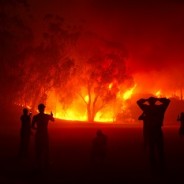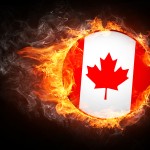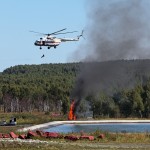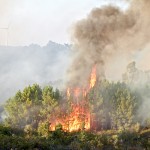Canada
Canada Forest Fires
Canada Forest Fires – The Heat of the Moment
Some people love the heat. Most people spend humid days in beaches, lounging on their beach chairs while they work on their tans, sipping cold drinks, taking dips in the pool, or just engaging in different outdoor activities. However, some parts of the world just cannot handle too much heat. Canada is just one of the countries that experience numerous forest fires because of the humidity.
A big change in the climate caused a big change in the temperature especially in the Northwestern part of Canada. As a result, there was also a big increase in the number of forest fire incidences in the country. In just seven months of the year 2014, almost two hundred forest fires took place. More than one hundred fifty forest fires continue to burn in the Northwestern territories and these forest fires include the one in Birch Creek. It is 250,000 acres big with a lot of trees to burn.
Canadian forest fire authority Canadian Interagency Forest Fire Center relates how the current forest fire count is definitely magnified compared to the annual average of 25 by this time of the year. Professional studies show that this year surpassed all forest fire records in the last ten thousand years in Canada. The problem is that aside from the forest fires themselves, these also emit carbon which adds to the global warming. Canada contributes a major part in the total carbon emission in addition to what Europe, Alaska, and Russia release. Each temperature increase will result to increase in the number of wildfire incidences.
Forest fires also speed up the melting of ice in the Arctic. One of the most notable forest fires that caused great impact on the Arctic is the Siberian fire in 2012. More than 90% of the Arctic’s surface melted and this is expected to happen annually after 2100. This may even be sped up if wildfires continue to take place. Now that the temperature has increased dramatically, even the duration of the forest wildfires increased. Before, such forest fires last for about forty days. Nowadays, forest fires usually last for about seventy five days and cause more damage. In some areas in Canada, the rainfall decreased significantly. This year is believed as the worst fire season not only in Canada but in all the parts of Northwestern territories.
While most of these forest fires are caused by lightning, some happened not just because of its dry lands. Some of these forest fires are caused by human errors. More than ten forest fires were actually caused by humans.
- Kakisa Forest Fire. One of the latest forest fires is the one in Kakisa. Although it is a small community with less than fifty people living one it, the government helped evacuate the residents.
- West Kelowna Forest Fire. Declared as under the state of emergency, residents are continuously evacuated from West Kelowna. Thousands of homes and more than two thousand human lives are at risk because of the forest fire.
In such times, it is important to stay alert and put safety first.




